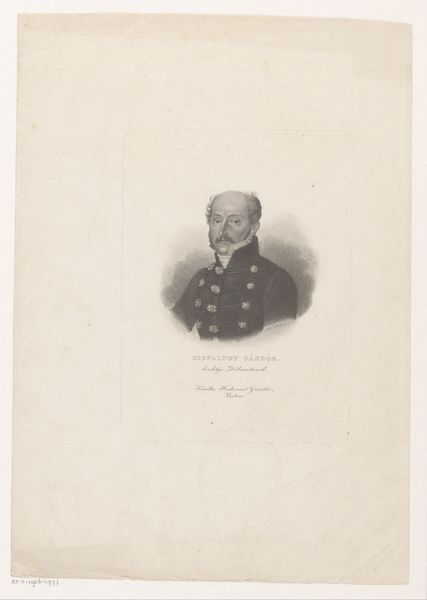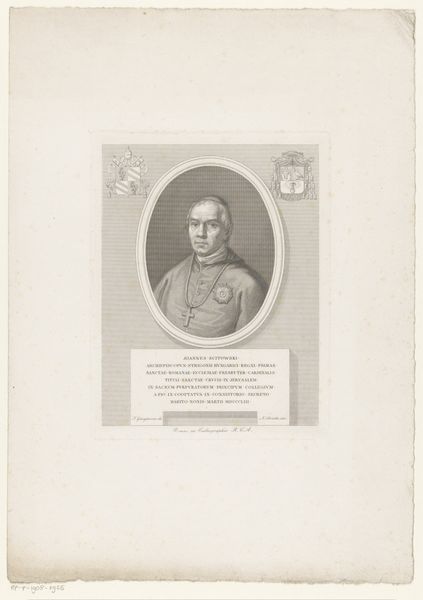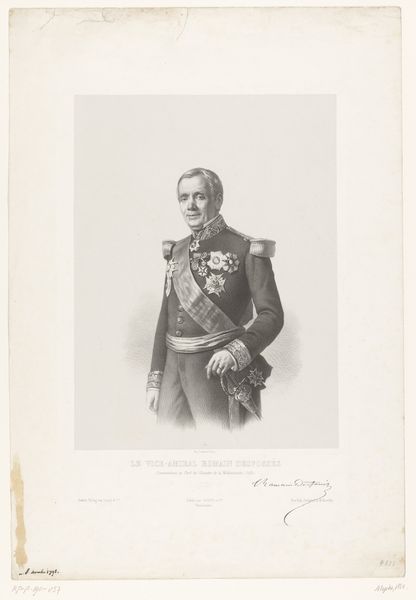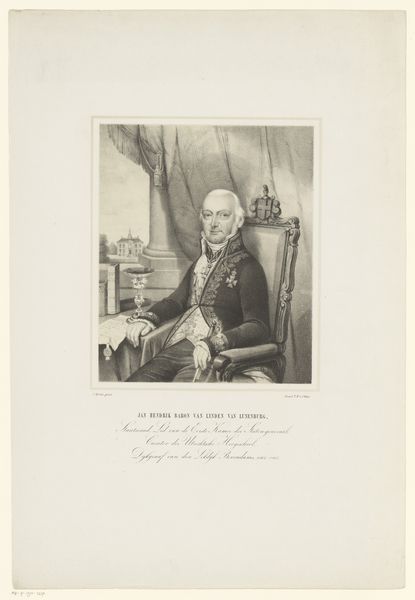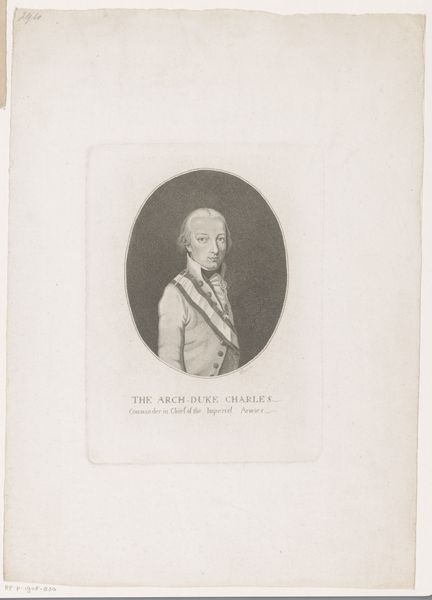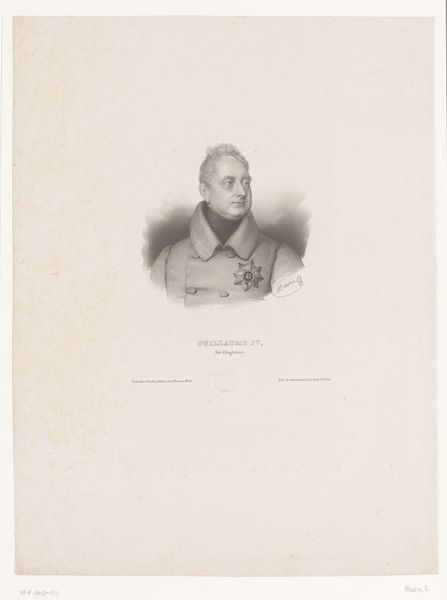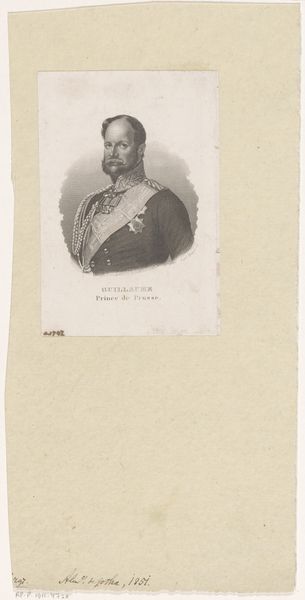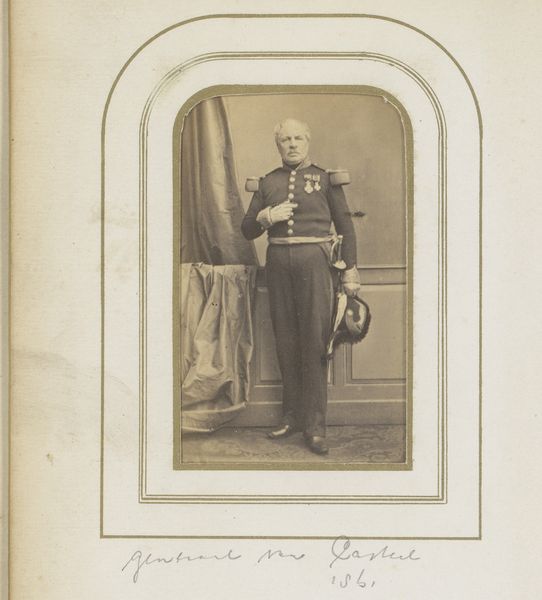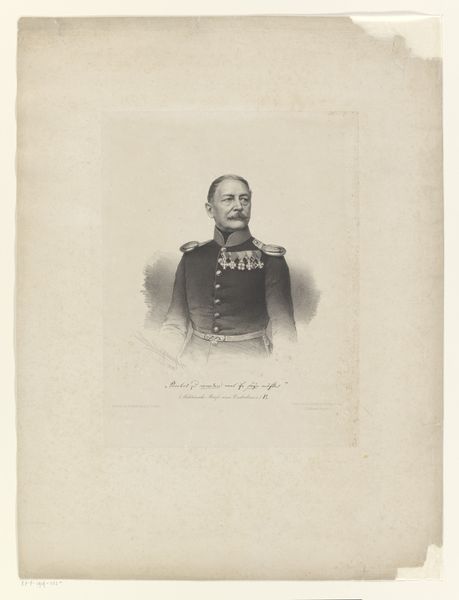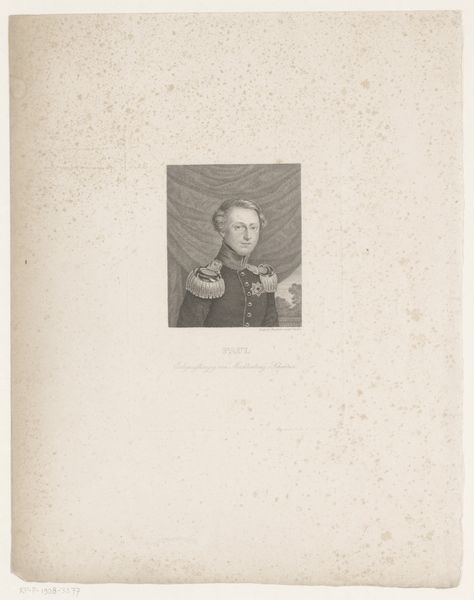
print, engraving
#
portrait
#
neoclacissism
# print
#
history-painting
#
academic-art
#
engraving
Dimensions: height 203 mm, width 167 mm
Copyright: Rijks Museum: Open Domain
Editor: So, this is a print, an engraving to be precise, called "Portret van Hans David Ludwig Yorck," created around the turn of the 19th century, sometime between the 1790s and early 1800s by Johann Friedrich Bolt. It strikes me as very formal, almost austere. What does it say to you? Curator: Well, immediately, it speaks of its time. The very production of such a portrait – its intended audience and distribution - is rooted in a specific cultural and political landscape. Consider, first, the sitter: Yorck was a prominent military figure in Prussia. A printed portrait like this wouldn't merely be a likeness; it would be a carefully constructed representation intended for public consumption. Editor: Public consumption? Like propaganda? Curator: In a way, yes. But think about what Neoclassicism was trying to achieve at the time. What ideas do you see communicated through the style and medium itself? Editor: The clean lines, the emphasis on order... it feels like an attempt to project stability and authority, I guess. Plus, engraving is reproducible, so you could disseminate this image widely. Curator: Precisely. Think about who would have been commissioning and collecting these images? How did these images reinforce or challenge existing power structures of the period? What do you think the 'history painting' theme does? Editor: Good point. History painting gives Yorck a sort of legitimacy, connecting him to important figures of the past and conferring honour, whereas disseminating the portrait as an engraving spreads those notions among a wider public, who may be illiterate, and rely on images for this knowledge. Curator: Exactly. It's a carefully orchestrated visual message intended to solidify Yorck's position and the values he represented in the Prussian social imagination. We should always be mindful of the art's role in reinforcing the established social hierarchy and communicating power! Editor: Wow, I definitely see it differently now. It's less about the individual and more about the whole socio-political message it was trying to convey. Thanks.
Comments
No comments
Be the first to comment and join the conversation on the ultimate creative platform.
